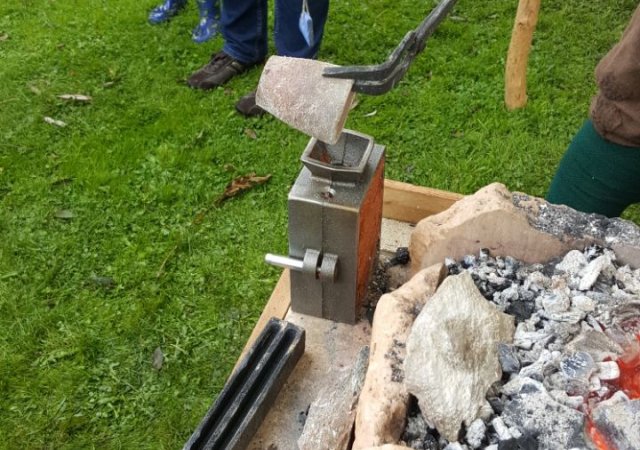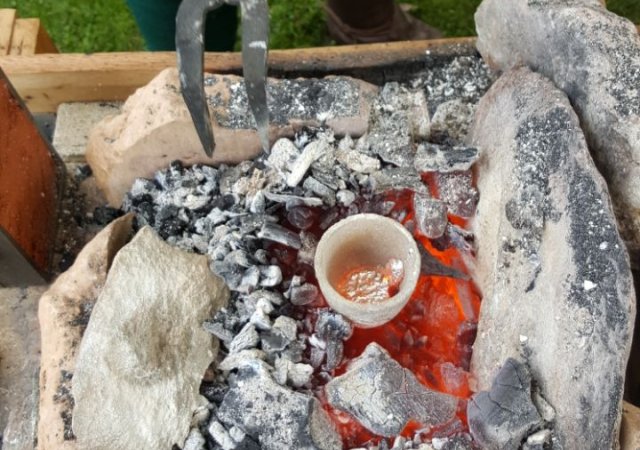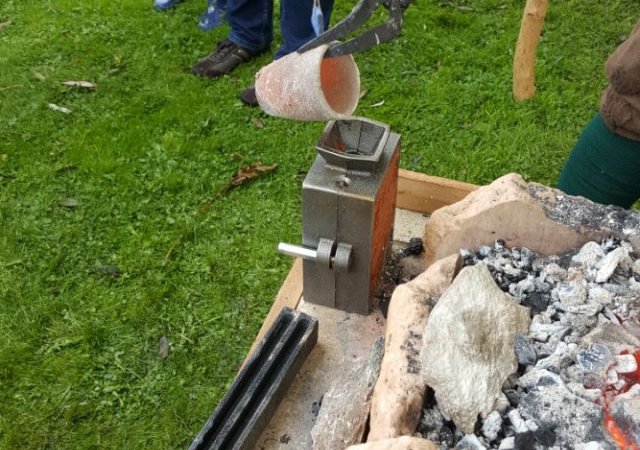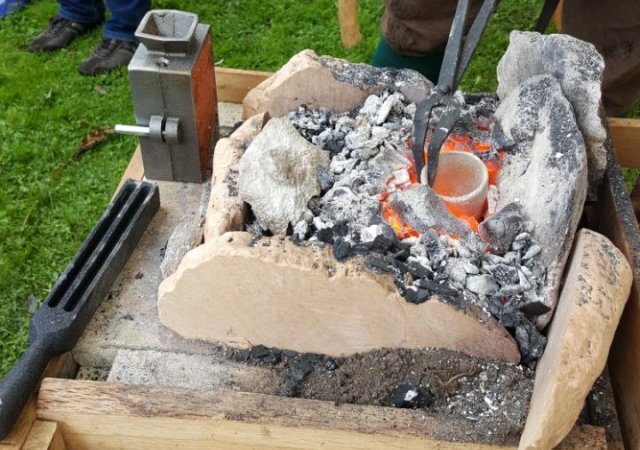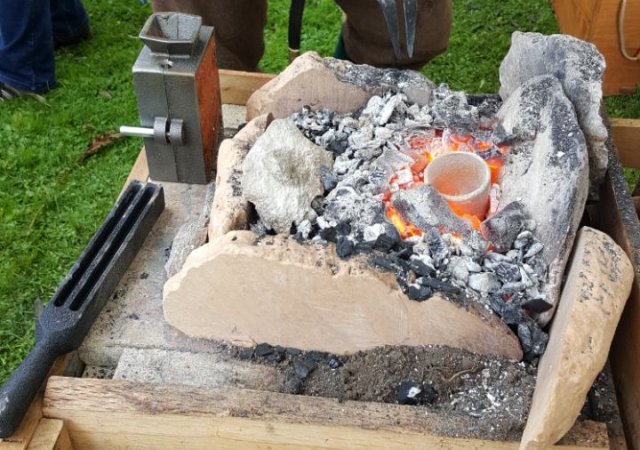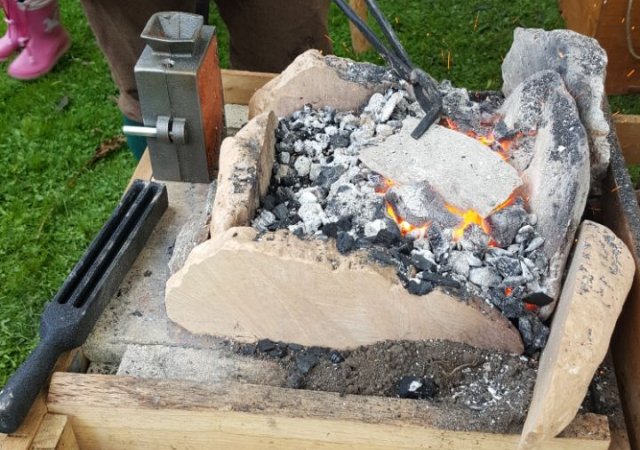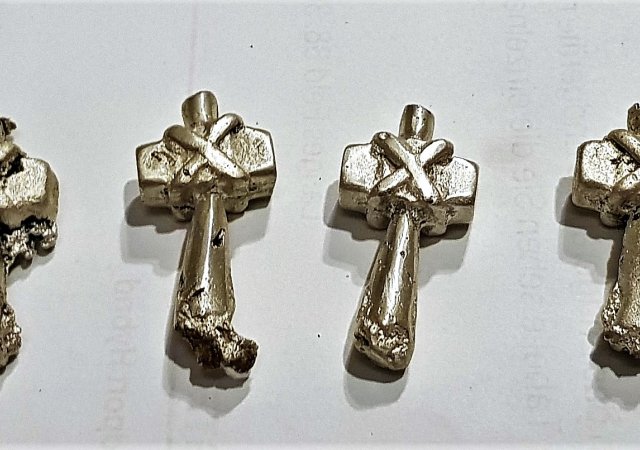Formlehm
Formlehm
Dank eines Artikels von Sven’s Haithabureise bin ich an das Rezept für Formlehm von dem Archäologen und Bronzegiesser Ken Ravn Hedegaard, “Casting Trefoil Brooches” gelangt.
“Actually the main content of these moulds was horse or cow dung, fresh from animals at pasture. I prefer horse dung, but I am sure cow dung was used more in the Viking Age. You also need hair – horsehair is good, but human hair works fine too. The clay has to be free from lime and as fine-grained as possible. Then you need some chamotte to temper the mixture. Here you reuse old used moulds (crushed pottery when no old moulds are at hand). I normally go for a mixture of 50% dung, 35–40% clay, 8–12% chamotte and some 3% hair (ca. volume). If in doubt, add more dung and hair, not more clay.”*
Die 50% Pferde- bzw. Kuhmist nutzt man, da die Ausscheidungen zum größten Teil aus kleinstem organischen Material bestehen. Beim Brennen der Gussform verbrennt dieses und lässt eine poröse Struktur zurück. Dadurch kann beim Gussvorgang die Luft aus der Form besser entweichen, was wiederrum eine optimale Verteilung des flüssigen Metalls ermöglicht. Die Schamotte und die Tierhaare hingegen sorgen für eine rissfreie und stabile Abtrocknung der Gussform.

